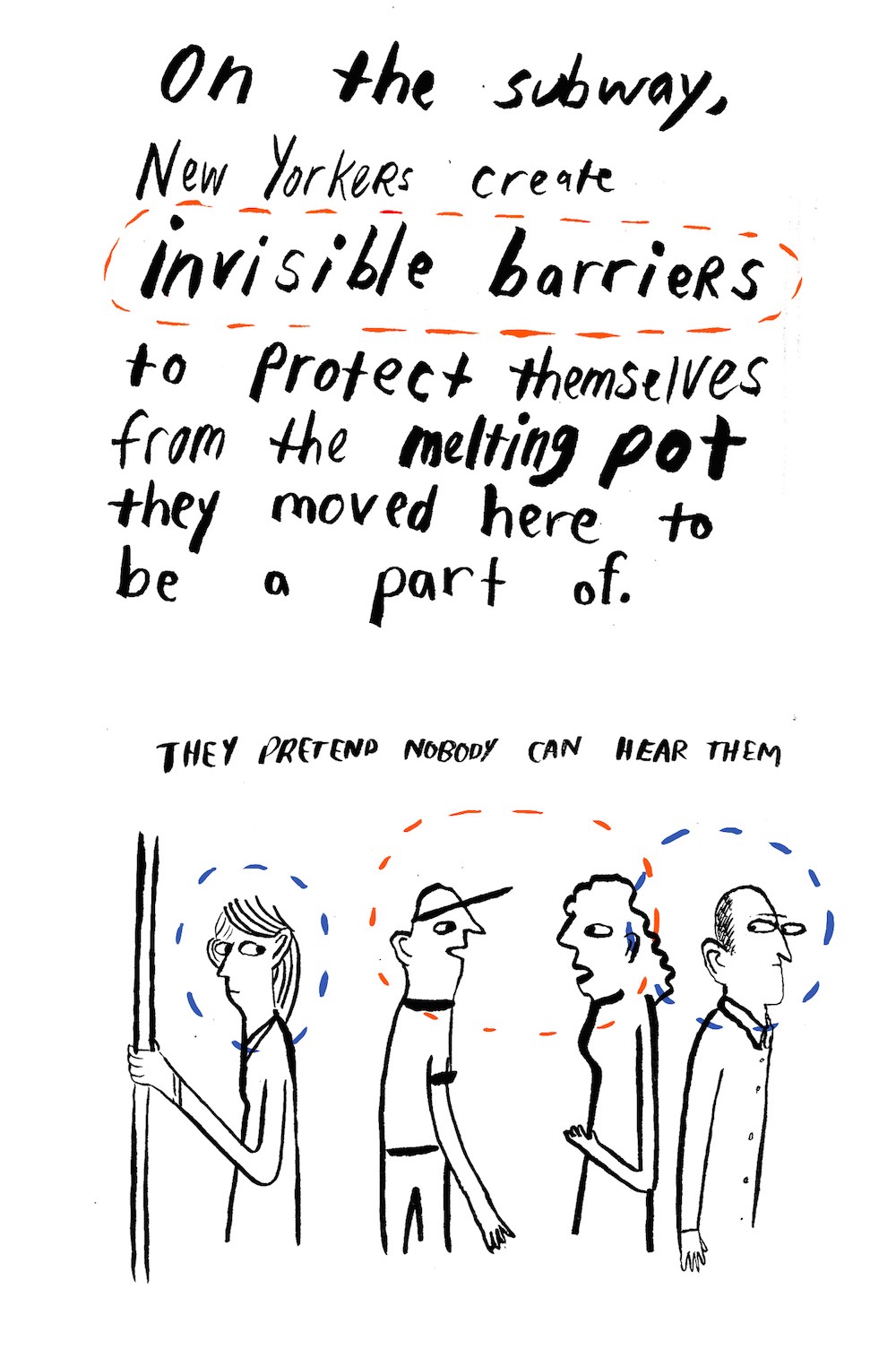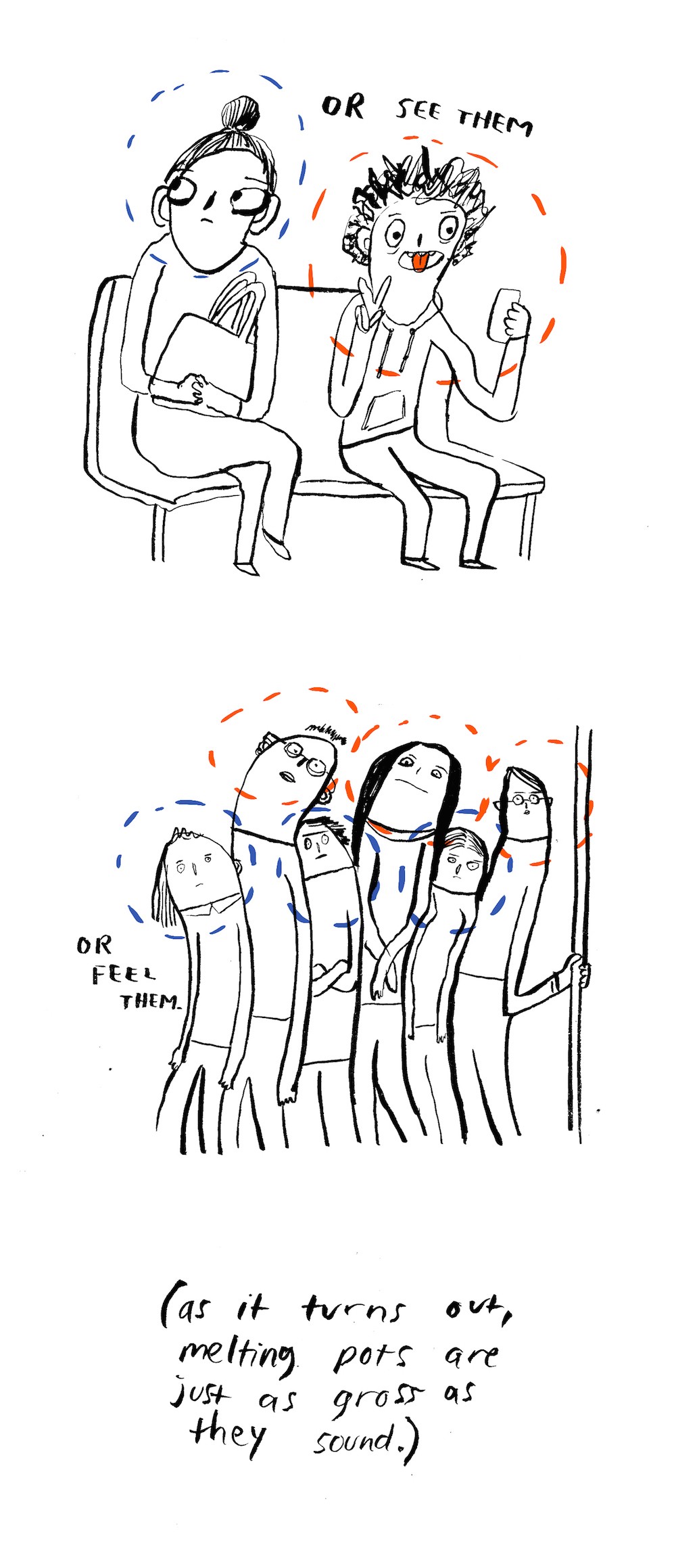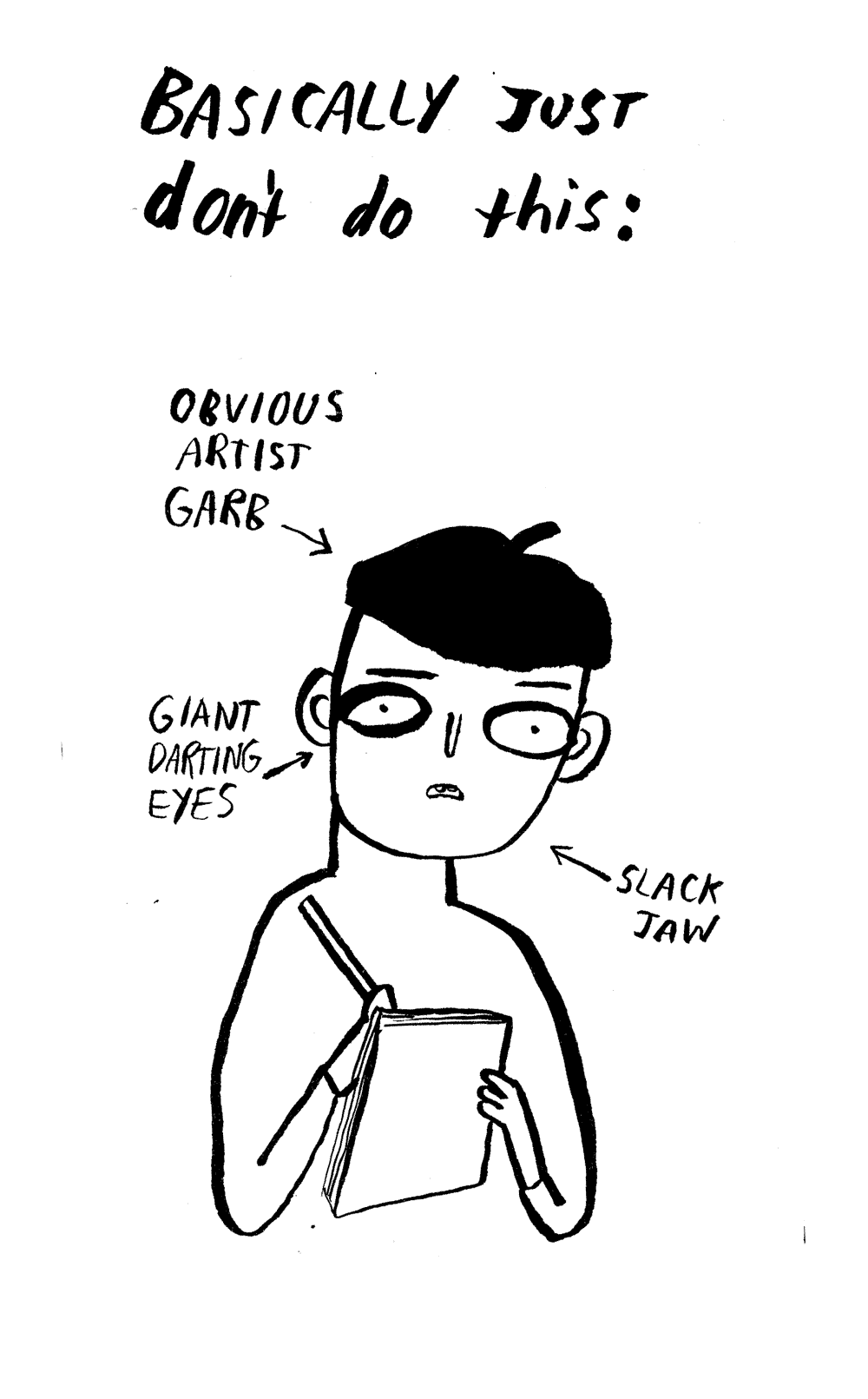Brand Supreme
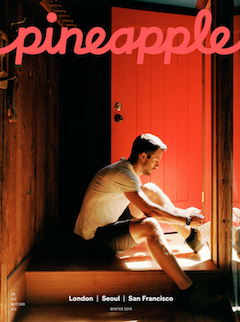
Airbnb has begun publishing a lifestyle magazine, Pineapple, for the site’s hosts and guests. That is, for the site’s two types of paying customers: the people who pay the company to be able to rent through its site; and the ones who pay to rent the listed rooms. It joins a long tradition of travel magazines subsidized by major industry powers. Airline magazines were lifestyle publications with a loose connection to cities and countries served by the airline that published them. In 2011, Marriot launched JWM, a lifestyle magazine for its wealthier customers, intended to help customers “master the art of living,” at least in cities that contain flagship Marriott luxury hotels. Pineapple, then, is a luxury lifestyle magazine with a focus on travel, and with a particular focus on travel to cities and countries that have been most receptive to Airbnb’s sensitive legal situation. It’s a hotel-like move for a company that needs to be seen, by regulators at least, as something other than a hotel operator:
Bjorn Hanson, a professor at the Tisch Center for Hospitality and Tourism at New York University, said most hotel brands offer guests “a publication of some form,” and that Airbnb’s new magazine “continues to position Airbnb as a legitimate hotel brand.”
The new magazine, he said, “can create a membership-like feeling, which can contribute to brand loyalty.”
So Airbnb is becoming more like a hotel chain — the world’s biggest, at this rate, by a lot. But meanwhile, what are the hotel chains doing? Not two months ago:
“We’re saying we’re going to be the largest publishers of life style,” said David Beebe, who is running the new studio, and is now partnering up with producers on the first projects. “We’re going to be the Red Bull of this category. That’s where we want to get to.”
With 18 brands, Marriott is the world’s largest hotel company with over 4,000 hotels in 78 countries. Through its individual properties, in-room TVs, websites, mobile platforms and reward program, Marriott certainly has the network through which it can distribute entertainment.
“Everyone understands that all of us today are really media companies and content publishers,” Beebe said. “It’s more about how do we do it.”
You know that ancient internet maxim, the one that’s actually just four years old? “If you are not paying for it, you’re not the customer; you’re the product being sold,” and all its variants? I would suggest it’s insufficiently broad, and its premises too optimistic. It’s the Newtonian model of marketing physics, unequipped to deal with a set of nonsensical but mathematically necessary realities. If you’re not paying, you’re the product; if you are paying, you’re probably still the product.
New York City, November 13, 2014
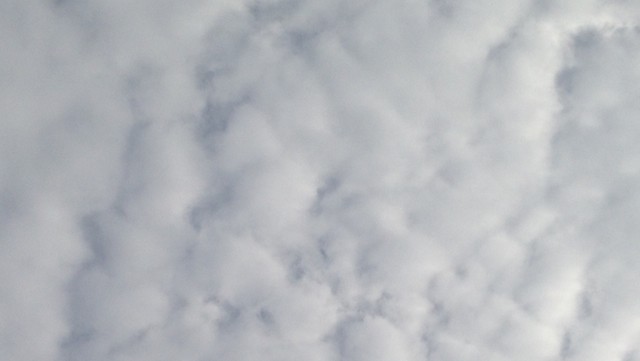
★★★★ Sharply, attentively unpleasant, rebuking every hopeful assumption. A nice, bright, it’s-cold-now-but-pretty morning went gray before the last bit of pre-commute work got done. The clouds were mottled or tessellated at first, and then they were solid, the light dim. It was too cold to stay out on the fire escape to field an interminable customer-service transaction on the mobile phone. This was November, and demanded respect as such. Darkness came thudding down earlier than an early exit from the office, and with it came flecks of cold water. Then the droplets were bigger than flecks, and then a drizzle was falling.
Toward a Grand Unified Theory of Katy Perry
Toward a Grand Unified Theory of Katy Perry
“This was never the way I planned, not my intention” — Katy Perry, “I Kissed a Girl”
A few weeks ago, there was a video of Katy Perry on TMZ called, “Katy Perry is a Pizza Enthusiast.” It was exactly the type of content you would expect based on the title, and it was not very compelling. But, watching the video — and I did watch it, even though I intensely dislike watching videos on the internet — I realized that Katy is. Compelling, I mean. Very. I am perplexed by this, given that I don’t really like pop music; I’m not attracted to her; I don’t think her voice is that great; and I don’t believe that she is a very good dancer.
In the video, the TMZ staffers mention that Katy recently wore a “pizza onesie,” which I had to see for myself, so I googled it. It’s exactly the type of outfit you would envision from the words “pizza onesie,” and yet there was something about it, the way that she seemed to be dressed as… content. It wasn’t a costume, exactly, but an extension of her persona: She has gone from being a “Pizza Enthusiast,” a girl who orders lots of pies at the club while her boyfriend Diplo spins, likely talking about how great Pizza is the whole time, and wearing a Pizza bathing suit in her new video, to wearing a Pizza Onesie.
Katy Perry is a meme brought to life, but she seems intent not just on being a positive, mindless enthusiast of kittens, sushi, cupcakes, and pizza, but to inhabit the same spaces as those things. It’s as if she is a walking Tumblr, image after image piled on successively, ever-present but with no real archive. Diplo is the perfect partner for this reality. I hope they last. You can just imagine them walking along hand-in-hand, Katy in her Pizza hoodie, the Diplo sound as the background soundtrack a hundred percent of the time.
She was spotted recently, dressed as a Flamin’ Hot Cheeto for (I guess?) Halloween.

Katy Perry is best read not in her lyrics or her performances, but in her videos. Back in 2008, when “I Kissed a Girl” was released, Katy Perry seemed sort of obviously destined for novelty song one-hit wonderdom. The video opens with a long shot of her laying on a bed, stroking a kitten, wearing a nameplate necklace. She spends the rest of it charmingly ad libbing, as if the whole thing was thrown together very last minute. This seemingly slapdash production was the first look many of us got at her, and probably, many of us thought, it might be the last. But it wasn’t, and she’s made nineteen more music videos since then (all of which I have just watched), and though the budgets have likely gone up, Katy Perry’s schtick, which is pretty brilliant it turns out, hasn’t changed since 2008. She seems to be very… genuine about being an entirely manufactured viral entity, made up of crazy costumes, heavy makeup and eye winks. She is an authentic, hundred-percent flash in the pan with serious staying power, and she never ceases to go viral. Her entire video canon depends on a few tried and true memes (cats, food, nerds) but you can almost boil it down to one thing, I think, after watching all of them:

This is a recurring theme in plenty of pop music, but Katy has made her entire videography the embodiment of the philosophy: she’s “super into things” but nothing too serious, nothing too avid, nothing overly earnest. Most of her videos are “jokes,” sick burns perpetrated on dumb boys, though they’re not really that funny most of the time, and it’s all in good fun, hey! No offense meant! The varnish of irony is so heavily slicked on that you couldn’t ever take her to task for any single thing, because maybe she was kidding and then whatever it was that seemed lame is actually so good after all?
The internet has put us all into the mindset of Consumers of Content, and our need for new waves of Content is insatiable. No one I can think of feeds this hunger faster, better, or more consistently than Katy Perry. She gets it. She is charming on Twitter to her 59.5 million followers (more than anyone else on the planet). Her Instagram account is a mishmash of cute photos of herself with animals, of food she is eating, and of more straightforward PR — magazine and record covers. Her minions reblog and make new accounts on her behalf on Tumblr and Vine and Twitter, spreading the word like a beautiful infection across the web, a machine fueled by Katy Perry herself, but also somehow Borg-like and able to function for chunks of time sans her sensory input.
“This is How We Do” is the best expression Katy’s Content Philosophy.
Just take it in. Wait, you can’t, there is so much content, so many signs and styles, and modes of being and red herrings and mixed media and stop. It could drive you crazy, if it wasn’t all so brilliant. In just over three minutes, it piles in flowers, Pee-Wee Herman, kitchen appliances, table tennis, blacklighted dancers, a bathtub full of pearls, pizza, popsicles, platform shoes, Chanel logos, basketball, poolside pizza, watermelon, palm trees, tacos, nail salons, dancing ice cream cones, popsicles, and pizza, Mondrian (???), cereal, a Windows phone, champagne, and Aretha Franklin. This isn’t even everything: this is just what I could write down with a pencil while watching the video. “This is no big deal,” I scratched on the pad of paper.
This is all in direct contrast to another megastar currently in the news — Taylor Swift, who is also apparently a sworn Enemy of Katy. Taylor’s new video, Blank Space, couldn’t be much more Earnest, and even her previous effort, “Shake it Off,” isn’t a convincing piece of humor or satire. Sorry Taylor, Katy wins this one.
Lol nothing matters.
Correction(s): A previous version of this article referred to Flaming Hot Cheetos, a snack made by Frito-Lay. The snack is actually Flamin’ Hot Cheetos. Katy Perry is dressed as a Mondrian, not a Rothko??? We regret the error(s).
The John Oliver Video Sweepstakes: Finale
Each week, the Content industry observes a sacred ritual: Together, but not quite in sync, dozens of websites embed and then post the longest segment from John Oliver’s HBO show, Last Week Tonight. That John Oliver’s weekly video(s) will go viral is, at this time, a given. Whether or not the posts that embed those videos will go viral is another matter altogether. Each time around there are winners, losers, and mere participants.
Two weeks ago, we congratulated Upworthy, The Huffington Post and overall winner Time, which harvested 21,598 Facebook interactions from John Oliver’s video about sugar. Last week’s contest was won by Slate, with 16,866 interactions, but Time’s gamble on a second, less newsy John Oliver segment paid off, netting the publication 10,946 interactions.
This week’s anchor segment is about the lottery. Here are the results.
Rank Site Facebook Interactions 1 Huffington Post 20910 2 YouTube 15407 3 Raw Story 5692 4 Upworthy 5155 5 Vox 2592 6 Mother Jones 2338 7 Time 1992 8 Alternet 1976 9 Slate 1941 10 The Blue Nation Review 1617 11 Salon 1323 12 Attn 922 13 Oregon Live 847 14 Talking Points Memo 720 15 Truthdig 706 16 Esquire 338 17 Reboot Illinois 328 18 Gawker 319 19 Ring of Fire 280 20 Camel City Dispatch 227 21 Mashable 185 22 TwentyTwoWords 159 23 The Week 155 24 Crooks and Liars 107 25 The Progressive Pulse 73 26 Death and Taxes 72 27 What’s Trending 72 28 Quartz 66 29 Patch Illinois 63 30 Mediaite 60 31 Laughing Squid 58 32 Uproxx 35 33 Postgrad Problems 26 34 AskMen 21 35 RedAlertPolitics 19 36 GovExec 15 37 Headspace Press 13 38 Pajiba 11 39 Videosift 10 40 EducationDive 7 41 Economic Policy Journal 7 42 Tech Times 6 43 Daily Dot 6 44 Philly.com 5 45 National Journal 5 46 BroBible 4 47 Milk and Cookies 4 48 Kollide TV 3 49 Truth-out 3 50 Tampa Bay Times 2 51 Galesburg 2 52 Tastefully Offensive 2 53 The Public Slate 2 54 RYOT 1 55 Uinterview 1 56 Monsters and Critics 1 57 Elite Daily 1 58 Sun Times National 1 59 ViralViral Videos 1 60 Trendolizer 1 61 SaveMyBoredom 1 62 iDigitalTimes 0 63 The Interrobang 0 64 The Paper (Houston) 0 65 Izissmile 0 66 The High Definite 0 67 Boomsbeat 0 68 Trendistic 0 69 UMissedIt 0 70 The Classy Lime 0 71 Video Link 0 72 Pandawhale 0 73 DailyScene 0 74 Podaholics 0
(For links to each of these posts, the raw spreadsheet data is available here. You can try some of the links yourself with these free tools)
This data was collected on Thursday evening, November 13th. The video and its many instantiations are still not done collecting traffic, but the rankings are now unlikely to change in any meaningful way.
At the time of measurement, this video had produced at least 66,916 Facebook interactions. 15,407 of those interactions were claimed by links to the YouTube video itself.
This left 51,509 surplus Facebook interactions to be claimed by a pool of 73 sites. If these shares were rationed equally, that would work out to about 706 free shares apiece. But that is not the world we live in! So congratulations are in order to our top three video posters, as determined by Facebook, as measured by SharedCount: Upworthy, The Raw Story, and, in first place, the Huffington Post, which harvested 20,910 Facebook interactions.
Here are the top ten sites for the main video over the past three weeks:
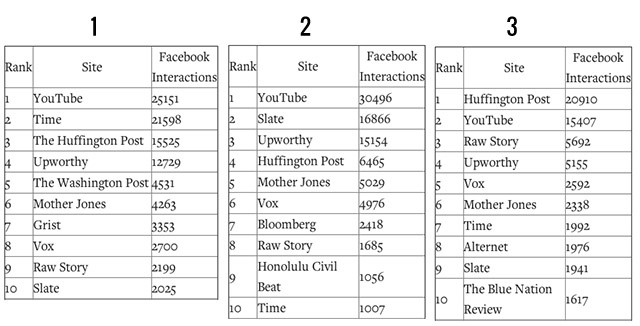
It was another off week for John Oliver embedding; no week we’ve measured has come close to the show’s early embedding success stories. Remember: An Upworthy post titled “John Oliver Goes Off On An Epic, Fact-Checked, Mic-Dropping Rant For 13 Minutes That You Need To See” gathered 358,069 interactions on its own, more than the last three week’s main segments combined; Mother Jones got 86,064 interactions from Oliver’s video about the Scottish independence vote. This week’s distribution was extremely brutal, too:
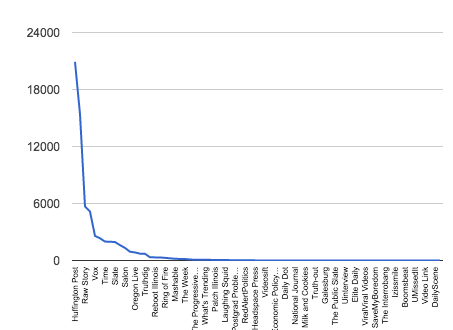
Last week’s episode was the season finale, and this will be the last John Oliver Video Sweepstakes post. It’s appealing, now, to try to draw conclusions from our limited data. Perhaps the content-sharing public is developing a sort of herd immunity to embedded John Oliver videos, resisting all but the most virulent specimens; this would help explain why there were more embeds than ever, but a relatively small number of shares. Thirty-five sites managed to collect ten shares or fewer. Thirteen collected zero, and I’m certain I didn’t find all of them. Or is the internet itself developing some sort of immune response? This week, the task of finding the embeds was more difficult–for reasons unknown, many sites that previously showed up in Google News searches were not present. Should we take the consistent success of a handful of sites to mean that social media “management” is more like search engine optimization than its practitioners would have us think? Or do we see the continued presence of weird anomalies as evidence to the contrary? And what do we conclude from the Huffington Post’s embed of John Oliver’s video gathering more shares than the YouTube video itself? That embedding is somehow getting more powerful? No, we can conclude none of these things. Such are the temptations of data journalism.
If the data tells us nothing, we must turn to words. Here are all the headlines that won, or placed, in the John Oliver Video Sweepstakes:
Week 1:
3. John Oliver Just Started ‘Show Us Your Peanuts’ To Call Out A Massively Shady Industry. Sign Me Up!
2. John Oliver Calls Out Sugar Industry, Demands They #ShowUsYourPeanuts
1. Watch John Oliver’s Brilliant Takedown of the Sugar Industry
Week 2:
3. John Oliver Learns That State Legislatures Are The Shadow Governments You’ve Always Feared
2. Watch John Oliver Try To Keep A Straight Face And Then Lose It After Witnessing Your Lawmakers Talk
1. Don’t Care About Your State Legislature? Let John Oliver Amusingly Explain Why You Should.
Week 3:
3. John Oliver Chugs Some Vodka To Prove A Point About America’s Horrible Education Scam, The Lottery
2. John Oliver: Americans foolishly ‘spend more on the lottery than they do on America’
1. John Oliver Explains Why Lotteries Don’t Really Help Fund Education
It will be sad to watch this strange and diverse fraternity of sites, brought together only by their desire to embed John Oliver videos, dissolve. But who knows? Maybe one day they will find themselves united again, by video or by meme, by gaffe or by death, in the spirit of sharing.
The ᴄᴏɴᴛᴇɴᴛ ᴡᴀʀs is an occasional column intended to keep a majority of ᴄᴏɴᴛᴇɴᴛ coverage in one easily avoidable place.
The High School Kids Make Lists

The Dream: I was back in high school. It was the night after a big party and about ten kids were running around with clipboards which held handwritten (remember handwriting?) lists of quips from the previous evening’s event, ranked from top to bottom. Almost all of the lists had something I said at the very bottom but it was explained to me that, duh, the lists were ranked from worst to best. I nodded and pretended like I knew that all along, which was the most realistic part of the dream because even in real life, even though I am a man in his forties, I am still apparently insecure enough that when I am confronted with a situation that I am unsure of I would just as soon pretend that I understand it than ask for additional information and potentially prove to anyone that there might be something they know that I don’t. (It is also worth noting that even in my dream I have to make myself the funniest guy in the room.) Anyway, the goal of the listmaking was for all the listmakers to hand their lists into some central organization where they would then be voted on, with the best list winning, I guess, a prize. Some of the listmakers were handing out a couple of dollars to each person whose quip helped make up their list, but other listmakers, who were clearly the popular kids, did not give out any money, seemingly on the understanding that just being included on their list was all the reward one needed. The dream ended before the vote happened.
Notes: Dream occurred at full clarity. I was never once aware that I was anywhere else but in the scenario presented. Setting was an amalgam of my actual high school and the many pop culture examples of high schools I has seen over the subsequent years. Some of the students involved were actual kids I hung out with back then. I appeared to be 17 or 18, which is pretty much how I exist in my mind all the time anyway. Dream and events within were for the most part believable and explicable. Random celebrity insertions did not challenge my credulity.
Analysis: But what does it mean? NOTHING. Dreams are meaningless. They are catalogs of persistent anxiety, unresolved anger, random events that have transpired in recent days and thwarted desires. They signify no coherent understanding of current events and they have less predictive power than the proverbial penny one flips a hundred times to divine some sort of direction or relieve oneself of the burden of decision-making. Dreams are worthless and investing them with any sort of significance is as idiotic as asserting meaning in unscheduled feline path-crossings or random looking-glass destruction. They are brain garbage. There is nothing more boring than the details of another person’s dream but if you are honest with yourself you will have to admit that your own dreams are not all that much more interesting. The only reason you are hearing about this dream is because I have a website. Sure, there are plenty of annoyances and irritations that are part and parcel of that (particularly if you are at an event where you are forced to explain what you do to people who make considerably more money than you by supervising complicated transactions around illusory maths or “creating” apps designed to help the already well-to-do save time and money by hiring the economically desperate to perform at subsistence-level wages the quotidian tasks we once all did each day without too much complaint but thank God now we can be freed up from running down to the liquor store or lifting up our arm to make a car stop and take us somewhere and instead we can better use that time to watch Netflix; maybe even worse than the rich, successful people who look down on you for plying your trade in the non-lucrative end of the already shallow content pool are the ones who, once they understand what your website is, tell you about a thing that happened to them in college that really changed their perspective on life and they bet it would be a really big pageview hit (for some reason everyone knows what pageviews are, or at least they think they do enough to throw the word around at the terrible parties I go to) if you ran it on your website and it’s all you can do not to say, “Yeah, you’re someone who spends her day standing in front of a whiteboard acting enthusiastic while you use words like ‘disrupt’ and ‘deliverables’ without any sense of shame, I’m sure your moment of college awareness really stuck with you,” but instead you nod and smile and tell them to please send it along) and there are always little things that crop up that need attending to that get in the way of your realizing your larger and more ambitious visions, but on the plus side if you want to go on and on about some dream you had no one can stop you. Or even edit you, really. Anyway, let me once again reiterate that all dreams are a bunch of worthless worries and weird memories and wants tossed into a cocktail shaker and agitated about before being poured into the highball glass that is your sleeping head, so seeking sense in any of them is a futile exercise, but with that caveat asserted I think it’s pretty clear that this dream is my mind telling me just how terrible the Internet is. It’s not even a particularly subtle dream. I mean, I guess the most I can say for my subconscious is at least it didn’t make the lists quizzes or have someone write a little essay about how my dreams aren’t actually dreambait. There was no flashing sign that read, “The Internet is terrible. Everything is terrible but the Internet is worse.” No one, in conversation with me, said, “You know what’s terrible? The Internet.” But it is fairly obvious that the message of this dream is that the most horrible thing we all face each day is the Internet. But also? It was JUST A DREAM. Al Pacino showed up there near the end, for some reason. It’s meaningless. Like life.
Conclusions: Everything is bad and only getting worse and why would the Internet be any different? Why wouldn’t the Internet be leading the charge? Dreams are worthless. See you in the subsequent installment of Alex Balk’s Dreamjournal! Who knows what we’ll look at next? Lately I have been having a recurring dream featuring the actress Gugu Mbatha-Raw but, uh, I don’t think I’ll be sharing that with you. Anyway, bye!
New York City, November 12, 2014
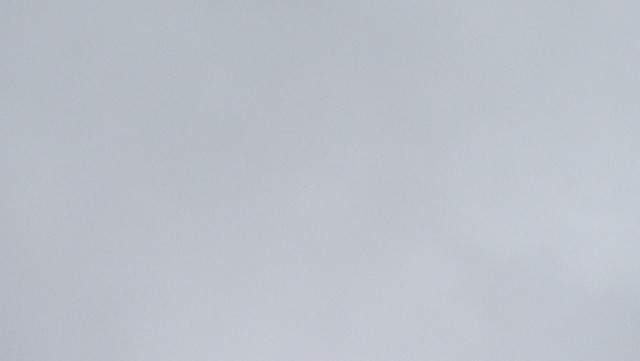
★★★★ A misty gray view became, in the middle of breakfast, a view of nothing at all, or nothing but the ropes of the facade-repair platform’s rigging, inches outside the glass against utterly blank gray. The fog lifted for a moment, and sunshine and discolored dimness coexisted. Then the fog darkened again, heavy visual counterpoint to the unseasonable warmth. Droplets were falling or blowing, prickling on bare arms. Finally, the clouds slipped and broke. Blue appeared, and dramatic bright edges. A helicopter hovered by the Freedom Tower.
Unfortunate By-products
Unfortunate By-products
From the corner bathrooms at 215 Chrystie Street, Ian Schrager’s upcoming Lower East Side entry designed by Herzog & De Meuron and with interior architecture by the English minimalist John Pawson, you can see the Chrysler Building and the 59th Street Bridge, if you don’t pass out from vertigo. The 19-foot-long bathrooms of the full-floor apartments are placed at the building’s seamless glass corners. It was Mr. Pawson who designed the poured concrete tub that oversees that sheer 90-degree angle. “It’s not about putting yourself on show, it’s about enjoying what’s outside. Any exhibitionism is an unfortunate by-product. I think what’s really nice is that at this level you’re creating a gathering space. You can congregate in the bathroom, you can even share the bath or bring a chair in.”
So, how many people can congregate in your apartment’s bathroom?

